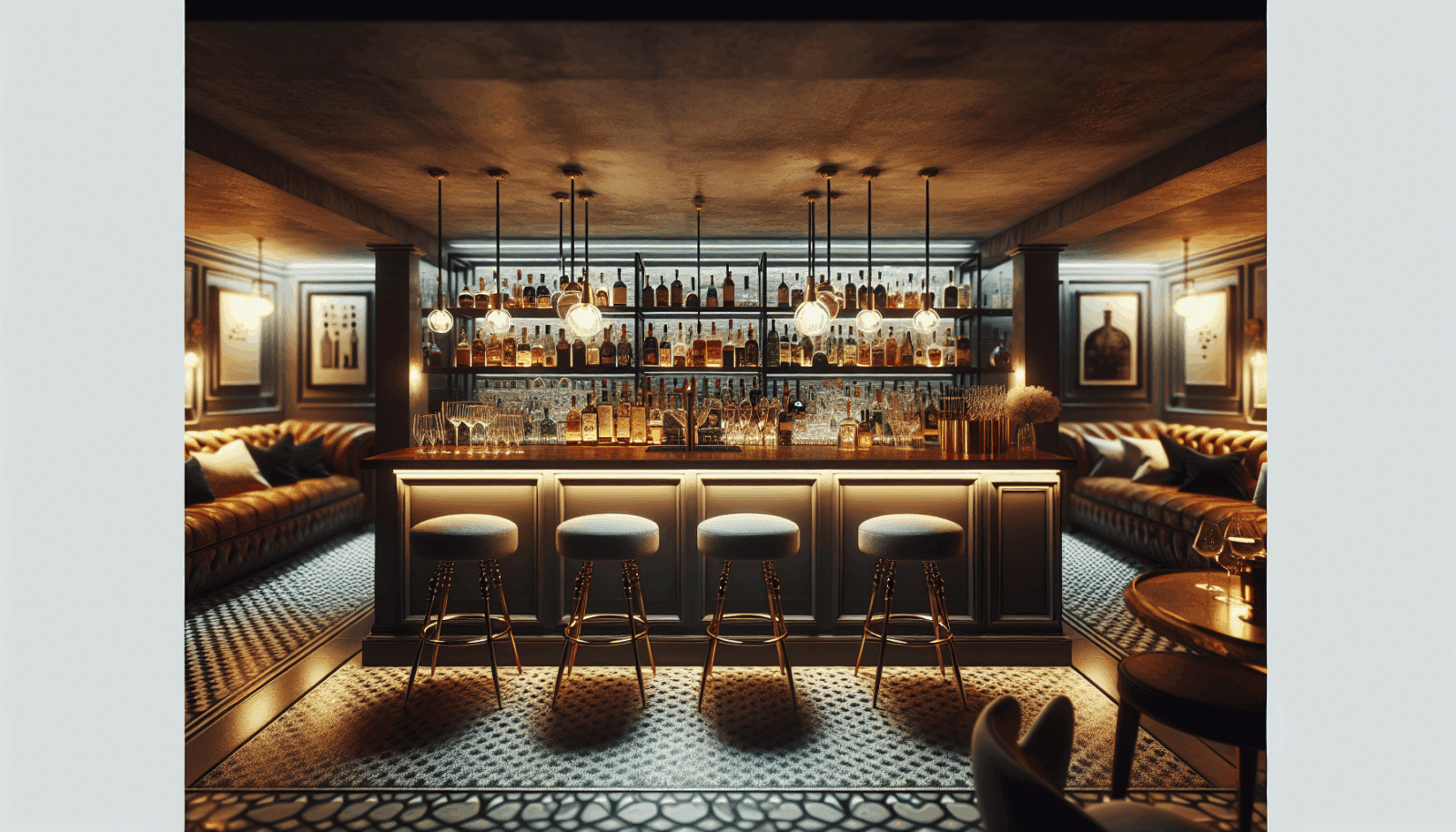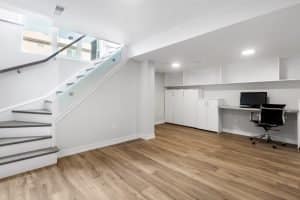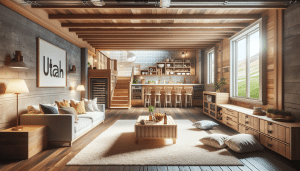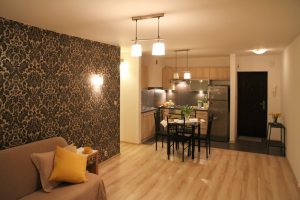Thinking about turning that unfinished basement into the neighborhood’s unofficial hangout? Good. A basement bar is one of those home upgrades that pays you back in fun, comfort, and—believe it or not—value. Whether you’re in Salt Lake County, Davis County, or Utah County, you’ve got space and potential under your feet. Let me explain how to make a stylish, practical bar that feels lived-in, modern, and totally you.
Contents
- 1 Why build a basement bar? (Short answer: because it works)
- 2 Style ideas — which way are you leaning?
- 3 Layout and flow — small choices that matter
- 4 Lighting and mood — set it right
- 5 Materials that last — practical choices with style
- 6 Appliances and fixtures — the little tech that feels big
- 7 Decor, personalization, and those Finishing touches
- 8 Practical considerations — permits, moisture, and comfort
- 9 Budgeting and whether to DIY or hire pros
- 10 One last thought — seasonality and trends
- 11 Ready to make that bar real? Let’s talk
Why build a basement bar? (Short answer: because it works)
First, some plain truth: a basement bar isn’t just about pouring drinks. It’s about creating an experience—movie nights that feel like VIP screenings, cozy winter get-togethers, game days without the living room chaos. It’s flexible space that adapts to seasons and moods. You’ll host, you’ll relax, you’ll save the main floor from beer stains.
Plus, basements often offer better ceiling heights and fewer sightline constraints, which makes lighting and acoustics easier to manage. And yes, adding a finished, entertaining-focused room can boost your home’s market appeal—if you do it right.
Style ideas — which way are you leaning?
Style sets the vibe, and the good news is you don’t have to pick just one. Here are popular directions people take (and why they work):
- Modern minimal: Clean lines, quartz counters (Caesarstone is a crowd favorite), matte black fixtures. Sleek, low-maintenance, and great for small basements.
- Rustic lodge: Reclaimed wood bar face, butcher-block counters (John Boos style), warm pendant lights. It feels lived-in immediately—like a cabin without the need for a long drive.
- Speakeasy cozy: Dark paint, velvet seating, vintage signage and a backlit liquor display. It’s intimate and a little secretive—perfect for date nights.
- Sports den: Barstools, wall-mounted TVs, team memorabilia, a kegerator. Practical and noisy—in the best way.
You know what? Mixing elements often wins. A modern base with a rustic countertop can feel fresh and nostalgic at once.
Layout and flow — small choices that matter
Designing the layout is less glamorous, but it’s where the bar lives or dies. Think of the bar as a stage: the bartender needs space to perform, guests need places to watch.
Here are practical pointers:
- Bar depth: Aim for 24–30 inches of counter overhang for comfortable seating.
- Working space behind the bar: At least 36 inches for prep and appliance access.
- Seating: Allow 18–24 inches per person on the bar rail; comfy lounge seating benefits from 36+ inches of clearance.
Contradiction alert: sometimes the coziest Bars feel small and cramped—and that’s exactly the point. If you want intimacy, it’s okay to design for closeness rather than wide open space. Just make sure guests can move without tripping over a footrest.
Lighting and mood — set it right
Lighting is what turns a room from functional to cinematic. Layered light is the trick: ambient, task, and accent.
- Ambient: Recessed cans or a dimmable fixture to set overall brightness.
- Task: Under-cabinet LEDs, pendant lights over the bar — Philips Hue or similar smart bulbs help you change mood with a tap.
- Accent: Backlit liquor shelves, LED toe-kick strips, or a vintage neon sign for personality.
Lighting also controls perceived space. Warmer tones shrink a room slightly, adding coziness; cooler tones open it up. Think like a director—what do you want the scene to feel like?
Materials that last — practical choices with style
Basement conditions can be tricky—moisture, temperature swings—so materials matter. Choose surfaces that look good and stand up to real-life use.
- Counters: Quartz for durability and low care; butcher block for warmth (seal it); stainless steel for an industrial look and easy cleaning.
- Flooring: Luxury vinyl planks mimic wood, resist moisture, and are wallet-friendly; tile works too, if you want a cool, clean aesthetic.
- Cabinetry: Solid plywood boxes with quality hinges outlast cheap MDF. Think like a contractor for a second—good carcasses matter more than pretty doors.
Appliances and fixtures — the little tech that feels big
Appliances change how you use the bar. Here are common upgrades that actually make a difference:
- Mini-fridge vs. undercounter fridge: Size matters—go for an undercounter unit if you host often; EdgeStar and Danby have reliable models.
- Sinks: Single-bowl stainless steel with a pull-down faucet keeps things tidy.
- Kegerators: Great for parties; dual-tap systems keep different brews on deck.
And don’t forget a good vent or fan if you’re running a coffee station, hot plates, or a microwave. Small appliances can generate surprising heat.
Decor, personalization, and those Finishing touches
Now comes the fun part: making it yours. Artwork, glassware, an old jukebox or a curated shelf of cocktail books—these are the items that spark conversation.
Try this: pick one focal piece (a vintage mirror, a neon sign, a dramatic light fixture) and let everything else support it. Group glassware by type; store bitters and syrups in labeled bottles. It’s practical and pretty.
Practical considerations — permits, moisture, and comfort
There’s a bit of groundwork most people don’t want to think about, but honestly, it saves headaches later.
- Moisture control: Address any damp spots first; vapor barriers, proper grading, and a dehumidifier are simple insurance policies.
- Inspections and permits: Local codes in Salt Lake County, Davis County, and Utah County may require permits for plumbing, electrical, or egress—check before you build.
- Soundproofing: Acoustic insulation and resilient channels reduce the stomp-and-rattle factor.
It’s tempting to shortcut here—who doesn’t want to get to the fun stuff? But a few careful steps now mean fewer surprises later.
Budgeting and whether to DIY or hire pros
Budgets vary: a simple setup with a mini-fridge and a reclaimed wood bar can be under a few thousand dollars. A full finish with plumbing, electrical, and custom cabinetry can run $15k–$40k or more. Costs depend on materials and How Much labor you want to take on.
If you’re comfortable wiring, cabinet-building, and plumbing, DIY can save money. If not, hire pros—licensed electricians and plumbers protect your investment and comply with codes. Think of it like buying insurance; annoying now, worth it later.
One last thought — seasonality and trends
Trends shift: rattan accents, moody jewel tones, and smart lighting are popular now. But timeless design—good layout, durable finishes, and thoughtful lighting—never goes out of style. And seasonal decor? Simple. Swap out glassware and throws to match holidays or football season; it keeps the space feeling fresh without a full renovation.
Ready to make that bar real? Let’s talk
If you’re in Salt Lake County, Davis County, or Utah County and want a basement bar that feels effortless and works hard—give Utah Basement Finishing a call. We’ll help with design choices, code questions, and the hands-on build so you can enjoy the end result sooner rather than later.
Call: 801-515-3473
Or: Request a Free Quote




